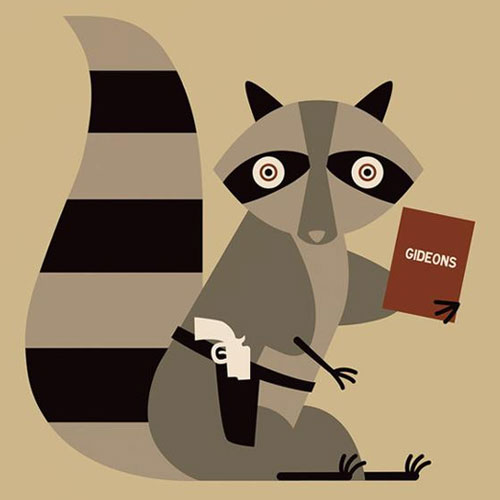In Depth Look @ Side 2
1. Martha My Dear
Primary Songwriter: McCartney
A friend of mine once fell for a girl because when faced with an incomplete yet impressive catalog of Beatles songs in a pub jukebox, she chose this song. He needed no further convincing, beyond her beauty and charm, that she was the one for him. Her choice of a deep cut rather than an overplayed hit proved she was unpredictable, and her endorsement of something so explicitly Paul spoke to a sweetness typically absent from the alcohol-dictated arc of a barroom playlist. Her weakness for melodic jaunts into falsetto was not a weakness at all.
A friend of mine once fell for a girl because when faced with an incomplete yet impressive catalog of Beatles songs in a pub jukebox, she chose this song. He needed no further convincing, beyond her beauty and charm, that she was the one for him. Her choice of a deep cut rather than an overplayed hit proved she was unpredictable, and her endorsement of something so explicitly Paul spoke to a sweetness typically absent from the alcohol-dictated arc of a barroom playlist. Her weakness for melodic jaunts into falsetto was not a weakness at all.
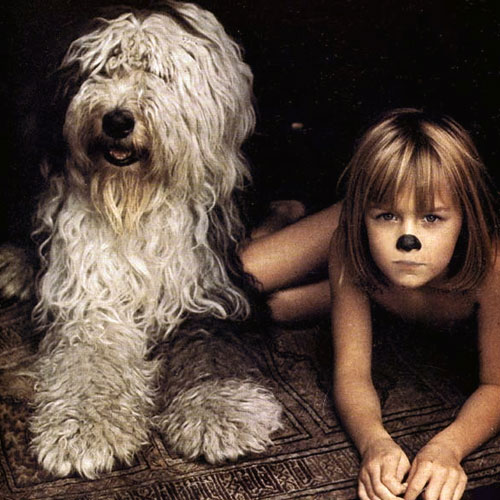
Actually, it was a badge of honor to wear, proudly, while bounding back to the table in sync with the song’s spritely rhythm. It’s those sudden falsetto lift-offs that really make Martha My Dear so irresistible: Look what you’ve done! and …with each other, silly girl! That, and McCartney’s blossom-within-a-blossom-within-a-blossom melody, which moves through three distinct sections, each more rhythmically aggressive and infectious than the last. (And we should take a moment to remind everyone that yes, the song’s subject shares a name with McCartney’s Old ; since the singer addresses her as you silly girl, we can assume the song is an ode to a family pet, because why would a grown man speak that way to a woman? OK? Kinda like how Got to Get You Into My Life is about pot. The first section Martha, my dear… sounds like a combination of a barrelhouse piano vamp and British hall. The second section Hold your head up, you silly girl… brings in the pumping brass, which attempts to ground McCartney’s increasingly lightheaded melody. The third section, Take a good look around you…, a rock- arrangement tackles an unexpectedly minor-key twist.
Martha My Dear was recorded soon after the finished Happiness Is a Warm Gun, and as Ian MacDonald suggested in his book Revolution in the Head, it’s possible that McCartney, his musical funnybone tickled by his partner’s eccentricities, here set out to create something equally tricky for his own amusement. It’s not as serpentine a song as Happiness, but it does sound blessed with the same kind of budding creativity as if the songwriter were discovering for the very first time while in the midst of the song. It’s one of the handfuls of songs on The Beatles that McCartney knocked out on his own: he laid down the instruments and vocals in two days at Trident Studios, even having extra time to work a little on Honey Pie while he was at it. It’s pure McCartney all the way, this pretty little autonomous nugget that, like so many of his contributions to The Beatles, served as a prelude to imminent solo albums like McCartney and Ram.
I love the image of McCartney walking into the studio late one afternoon and hammering out this tune as if it were an afterthought—an aside, a thing of lesser consequence. Of course, Martha My Dear is none of these things; it’s yet another precious metal hidden in The Beatles‘ rough. And if someone puts this on the jukebox at your neighborhood bar, then proceed directly to his or her heart.
—Zeth Lundy
2. I’m So Tired
Primary Songwriter: Lennon
The best thing about I’m So Tired is that it’s a perfect example of Lennon just being Lennon. The song was written in Rishikesh and expresses his growing ambivalence about the experience. Apparently, all the meditation was, of all things, causing Lennon insomnia. A couple of years after the trip, he said, “the funny thing about the camp was although it was very beautiful and I was meditating about eight hours a day, I was the most miserable songs on earth”. Part of Lennon’s grumpiness here is due to his missing a couple of his usual vices.
The best thing about I’m So Tired is that it’s a perfect example of Lennon just being Lennon. The song was written in Rishikesh and expresses Lennon’s growing ambivalence about the Maharishi and the experience in general. Apparently, all the meditation was, of all things, causing Lennon insomnia. A couple of years after the trip, he said, “the funny thing about the camp was although it was very beautiful and I was meditating about eight hours a day, I was the most miserable songs on earth”. Part of Lennon’s grumpiness here is due to his missing a couple of his usual vices.
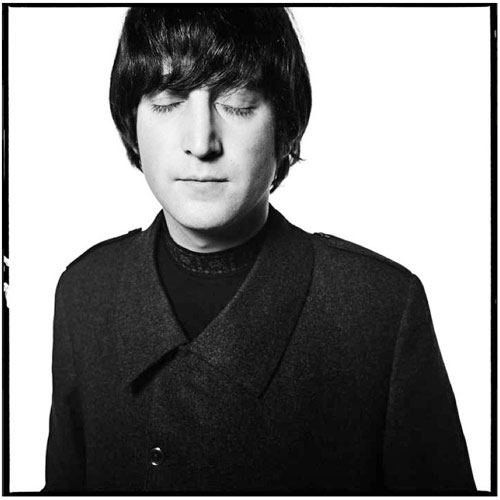
As a listener, you become privy to the push-pull going on in Lennon’s head. I wonder, should I get up and fix myself a ? he asks, before answering his own question with a harried, No, no, no! Later, he admits, Although I’m so tired, I’ll have another cigarette. But instead of getting down on himself for giving into the vice, he goes after the man who helped popularize tobacco in the first place: …and curse Sir Walter , he was such a stupid git. Even in such a befuddled, lethargic state, the acerbic wit is sharp as ever. I’m So Tired is often compared to I’m Only Sleeping from Revolver. Some of the general sentiment may be the same, but there’s something far more complex, even sinister, going on here.
Lennon thought his material for The Beatles was some of his best. The authenticity in Lennon’s vocal definitely backs up that claim. By the time he sings, exasperated, I’d give you everything I’ve got for a little peace of mind, you believe that at that moment, he would, custom-painted Rolls and all. How like Lennon to become so tortured on a soul-searching, meditative retreat. It’s not his fault that in expressing his feelings he may have inspired a hundred latter-day rock stars to bitch about their rock ‘n’ lives.
Musically, I’m So Tired is fairly straightforward. Though parts of the original demo, including an extra verse, were trimmed, the track was recorded in a day’s work. Lennon’s shifty state of mind transfers perfectly to the . To whatever extent they were working solo at this point, the Beatles remained peerless interpreters of each others’ songs. The soulful, laconic feel of the verse shifts to the dirty, bluesy chorus like a rollercoaster cresting the first big . Starr’s drumming lends to the illusion of a tempo change before, as musicologist Alan W. Pollack notes, McCartney’s nonchalant little riff ushers the solipsism back in. And catch the agitation behind the /organ squawk at 1:54… one in an endless list of the Beatles’ little touches. At the time, Lennon’s muttering at the end of the track was factored into the whole Paul Is Dead conspiracy. What he’s saying, perhaps, is Monsieur, monsieur, how about another one? All this happens in about two minutes. Part of why I’m So Tired remains a favorite White Album track, and was one of Lennon’s, is those two minutes are wonderfully, quintessentially him.
—John Bergstrom
3. Blackbird
Primary Songwriter: McCartney
On an album that came to be known as the “White Album”, “Blackbird” might rightly be subtitled McCartney’s black song. This is because the tune is said to have been inspired by America’s racial troubles in the spring of 1968—lyrics like “take these broken wings and learn to ” can easily be applied to the African-American struggle at that time. The Civil Rights Act of 1964, passed four years earlier, banned discrimination in employment practices and public accommodations. There was also the Voting Rights Act of 1964, which restored and protected voting rights.
On an album that came to be known as the “White Album”, “Blackbird” might rightly be subtitled McCartney’s black song. This is because the tune is said to have been inspired by America’s racial troubles in the spring of 1968—lyrics like “take these broken wings and learn to ” can easily be applied to the African-American struggle at that time. The Civil Rights Act of 1964, passed four years earlier, banned discrimination in employment practices and public accommodations. There was also the Voting Rights Act of 1964, which restored and protected voting rights.
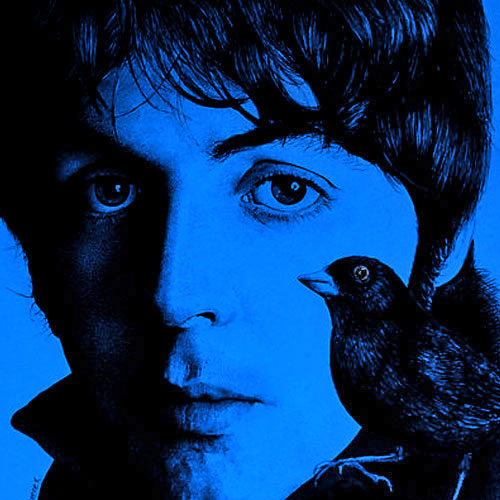
Then in 1968, the Civil Rights Act of 1968 passed, which banned discrimination in the sale or rental of housing. Yet despite all this progress, Martin Luther King was assassinated in April of 1968, in , Tennessee. Riots subsequently broke out in more than 110 cities across the United States in the days that followed. These hot spots included many major metropolises, such as , , and , D.C. These birds may have been freed, so to speak, but their wings were broken by a gut-wrenching assassination and then trampled on the ground during angry riots.
But it wasn’t just King’s assassination that frustrated many African-Americans. African-Americans may have had their legal rights properly restored, but economically they were still down at the bottom rung. This is why Malcolm X’s aggressive—not passive—resistance found such a huge following. It’s also partially why the Black Party came into vogue. Malcolm X preached by any means necessary, because civil disobedience simply didn’t finish the job. Certainly, one didn’t see white America crowding the ghettos in large American cities. Equal rights did not immediately lead to equal economic standing, which forced many winged ones to sing “in the dead of night”.
Against this backdrop of anger and pain, however, Blackbird is a beautiful song. If you listen closely to McCartney’s acoustic guitar finger picking on it, you can hear how Bach’s Bourrée in E minor inspired its melody. In fact, McCartney and Harrison tried to learn that Bach piece as kids in to show off their budding guitar skills in front of other aspiring musicians. Guitarists will immediately recognize how melody and notes are played simultaneously on the upper and lower strings, and how McCartney adapted a segment of Bourrée for the song’s intro. He also applies this musical motif throughout the tune.
While this lyric alludes to the Civil Rights Movement, it can be easily applied to almost any situation where somebody is struggling against the forbidding odds. At one point McCartney sings, Blackbird / Into the light of the dark black night. Even in the shadow of death, so to speak, there is always a glimmer of light. McCartney takes on the role of an encourager when he sings these words. Circumstances may be bleak, but he believes in this struggling one and wants to see him or her overcome.
Blackbird fit with its time, but it also attained a sort of timelessness. You don’t need to know McCartney’s original musical or lyrical inspirations to appreciate it. Furthermore, acts ranging from the Waterboys to Eddie Vedder have covered the song over the years. Clearly, its message has remained relevant, and its melody continues to move listeners. And to that, we say , blackbird, .
—Dan MacIntosh
4. Piggies
Primary Songwriter: Harrison
Even though Lennon was known as the political Beatle, Harrison proved for the second time in the Beatles’ catalog that he, too, had political chops with Piggies. The song intoned as a humorous social satire of class dynamics serves as the perfect follow-up to his scathing review of the British taxation system on Revolver’s Taxman. The delightful Baroque-influenced tune, featuring harpsichord and a four-piece string quartet, is a wonderful offset to the lyrical content, which on first listen is light enough in itself, but upon second glance shows its deeper meaning.
Even though Lennon was known as the political Beatle, Harrison proved for the second time in the Beatles’ catalog that he, too, had political chops with Piggies. The song intoned as a humorous social satire of class dynamics serves as the perfect follow-up to his scathing review of the British taxation system on Revolver’s Taxman. The delightful Baroque-influenced tune, featuring harpsichord and a four-piece string quartet, is a wonderful offset to the lyrical content, which on first listen is light enough in itself, but upon second glance shows its deeper meaning.
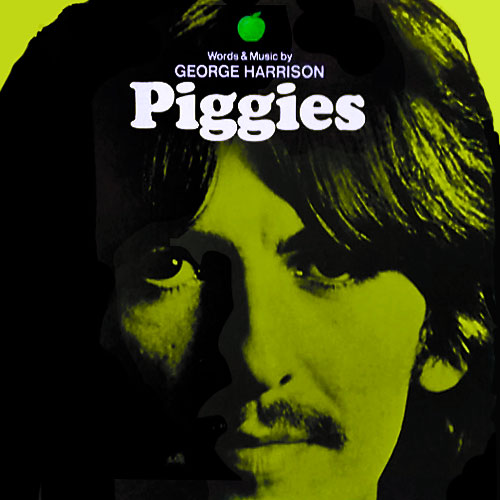
Lyrically, Harrison’s Orwellian piggies are broken down into classes: the working class little piggies and the upper class, aristocratic, political bigger piggies. As life continues to get harder for the little piggies, the bigger piggies continue profiting and leading ever more extravagant lives:
Have you seen the little piggies
Crawling in the dirt
And for all those little piggies
Life is getting worse
Always having dirt to play around in
Have you seen the bigger piggies
In their starched white shirts
You will find the bigger piggies
Stirring up the dirt
And they always have clean shirts to play around in
And in their styes with all their backing
They don’t care what goes on around
And in their eyes there’s something lacking
What they need’s a damn good whacking…
Despite the difficulty, the Beatles were going through during this time period, all four were involved in recording Piggies. Starr provided tambourine and McCartney purposefully went with a more plucking-style line to imitate the sound of pigs grunting. Lennon did not contribute instrumentally, although he helped with the tape-loop gruntings that were used throughout the song and recommended that Harrison change the final line from “Clutching their forks and knives to cut their pork chops” to Clutching their forks and knives to eat their bacon. The new play on words gave the bigger piggies an even darker tone; instead of just hurting their own, they cannibalize their brethren.
Harrison’s mother, Louise, also contributed to the lyrics, recommending the most violent of the lines — What they need’s a damn good whacking — when Harrison was looking for something that would work with the previous line, In their eyes, there’s something lacking.
Surprisingly, the version that appears on The Beatles was not the song in its entirety. Harrison’s final verse was left out of the studio cut and was only re-instituted in his concerts in the 1990s. The song, including the additional verse, can be heard on Harrison’s Live in Japan album:
Yeah, everywhere there’s lots of piggies
Playing piggy pranks
And you can see them on their trotters
Down at the piggy banks
Paying piggy thanks
To thee brother
Although Harrison never intended the song as anything more than humorous commentary, upon the album’s release in November 1968 many people took the lyrics to be an attack on the thanks to the animal chosen to represent humanity in the song.
Unfortunately, the song took on even more of a sinister tone in August 1969 when Charles Manson used it as one of the prophecy songs he heard within The Beatles. Manson saw the song, along with a handful of others, as a call to arms to his family of followers and in the racial war, he had long been predicting. This uprising, which became known to Manson as Helter Skelter (see also Helter Skelter, on side three), was, in Manson’s eyes, the time for black people to give white people the damn good whacking he thought they were due. As the summer progressed and his vision wasn’t coming to pass, Manson felt he would have to start things off by showing the way—by means of starting the murders on his own.
During the murders of Sharon Tate, Leno and Rosemary LaBianca, and four others that Manson instructed, his minions left references to the song lyrics throughout the murder scenes. At both houses, pigs and death to pigs was written in blood on the victim’s walls and in the LaBianca murder, Leno LaBianca was stabbed and left with both a and in his body.
Many consider the Manson murders to be the end, or death knell, of the summer of love. For these events to have been tied—even if just through the mind of a crazed and off-kilter fan—to the Beatles catalog, a who espoused nothing but love and peace, was in itself a true crime.
—Stacey Allen
5. Rocky Raccoon
Primary Songwriter: McCartney
The Beatles is that rare breed of album where eccentricities and curiosities, like an acoustic Western ditty about spurned love and revenge, can fit in simply because they stand out. The inspiration for Rocky Raccoon hit McCartney while the Beatles were visiting India in the late ‘60s. An Eastern influence, though, is not anywhere evident. Rocky Raccoon is a thoroughly American number, complete with a backwoods setting, shootouts, hoe-downs, a copy of the Bible, and dubious care. It almost plays like a send-up of a Johnny Cash tune.
The Beatles is that rare breed of album where eccentricities and curiosities, like an acoustic Western ditty about spurned love and revenge, can fit in simply because they stand out. The inspiration for Rocky Raccoon hit McCartney while the Beatles were visiting India in the late ‘60s. An Eastern influence, though, is not anywhere evident. Rocky Raccoon is a thoroughly American number, complete with a backwoods setting, shootouts, hoe-downs, a copy of the Bible, and dubious care. It almost plays like a send-up of a Johnny Cash tune about the failed wiles of a likable underdog.

Its frontier-folk nature even compels McCartney into character. He drops the refinement and light Britishness of his usual vocal in favor of rootsy, more roughhewn inflections. The way he mumbles through “black mining hills of Dakota”, his down-home delivery of “that boy”, and his mispronunciation of “Gideon” (“Gidjin”) all insert McCartney, as a sympathetic narrator, into the song’s comic theatrics. His bumbling-bard persona is of a piece with the mood and spirit of “Rocky Raccoon”.
The story itself is a well-worn account of shame and jealousy-sparked revenge or the attempt at it anyway. Young Rocky Raccoon, a good-hearted if impetuous chap, loses Nancy Magill, the girl of his fancy, to another guy named Dan. With a shiner on his face and bad blood in his heart, Rocky plots his vengeance. It would be a showdown at the camp hoe-down. But Dan proves a quicker draw and shoots Rocky first, leaving him laid up and in the brief care of a boozy . Down and out, Rocky ends his hoped-for reckoning by defiantly vowing a comeback.
McCartney collaborated with Lennon and Scottish folkster Donovan in fleshing out the concept for Rocky Raccoon. The broad outline is fairly standard but it’s in the story’s seeming marginalia, its tossed-off narrative details, that this trio of delightfully whimsical and imaginative minds brings the song to life. Like how the divine seems to maintain a watchful presence in the form of Gideon’s Bible or how Rocky intends to harm Dan by shooting off his legs. Perhaps the funniest scene is when the , stinking of gin, arrives to aid Rocky and immediately lies down on a table himself. These are the sort of quirks that aren’t unexpected coming from a late-’60s McCartney composition but they still surprise with their blithe oddity.
As a piece of , Rocky Raccoon is exquisitely textured, though it takes its time in achieving that form. It develops gradually, with McCartney’s acoustic guitar initially at the center, garnished by Starr’s light high- crunches and Lennon’s (unusual) go at a thudding six-string , which, when emphasized, sounds like a brass section. The smoky grayness of the song’s beginning then gives way to an inventive flow of lively and colorful instrumentation: short spurts of harmonica, George Martin’s slinky, saloon-style piano on the bridges, and warm patches of an accordion-like harmonium. The story of Rocky’s travails is too screwy for just an acoustic folk backdrop. That wouldn’t have done him justice. And this is an album where sonic simplicity isn’t often the preferred method.
All added up, this is a tune full of charm, wit, and oddball pop pleasure. The Beatles were peerless in their capacity for such songwriting. But can you imagine it without the snappy name Rocky Raccoon? Would it have been so lasting and memorable under a different title, like “Rocky Sassoon”, which was McCartney’s original idea? He later determined that Raccoon was more boyish and, thus, a better match. In fact, the pairing of Rocky and Raccoon perfectly captures the character’s mix of macho bluster and lowly inadequacy. It’s absurdly well-calibrated. Rocky is a lovable buffoon who, from the outset, doesn’t appear likely to prevail and probably won’t learn his lesson after he falters. The name Rocky Raccoon renders him an open book. But the details of his story and the baroque sounds that accompany it are far from predictable. That is truly the hallmark of The Beatles as a whole. It careens, it deviates, it undermines, and it positively wows. The Beatles may have been in collapse, but their was still soaring.
—Barry Lenser
6. Don’t Pass Me By
Primary Songwriter: Starky
Originally called Ringo’s Tune and also This Is Some Friendly, the ditty that ultimately became Don’t Pass Me By was the first solo song written by Starr that the Fab Four ever recorded. Although the album was recorded in 1968, Starr probably wrote the song years earlier in either 1963 or ‘64; indeed, bits of the song are heard on a 1964 BBC radio broadcast in which Starr and McCartney discuss its beginnings in their interview. Fans of Starr commonly claim that his songwriting talents go underappreciated, but we have little material to his talents by.
Originally called Ringo’s Tune and also This Is Some Friendly, the ditty that ultimately became Don’t Pass Me By was the first solo song written by Starr that the Fab Four ever recorded. Although the album was recorded in 1968, Starr probably wrote the song years earlier in either 1963 or ‘64; indeed, bits of the song are heard on a 1964 BBC radio broadcast in which Starr and McCartney discuss its beginnings in their interview. Fans of Starr commonly claim that his songwriting talents go underappreciated, but we have little material to his talents by.
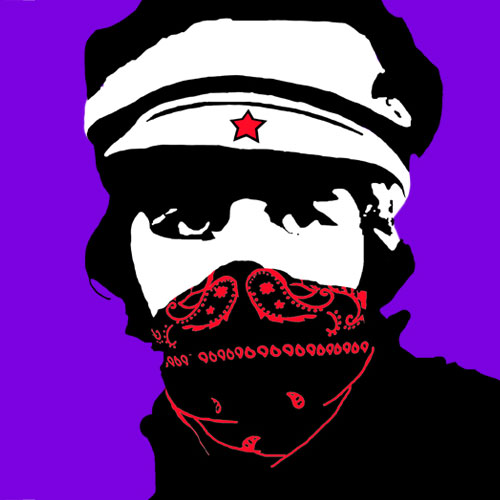
At least in the context of the Beatles that is. Don’t Pass Me By and Abbey ‘s ’s Garden are the only Beatles songs Starr wrote by himself, and therefore the only pieces we have to his skill. Fans, digging deep, claim the song’s simplicity is endearing, that the lyrics are telling (the line You were in a crash and you lost your hair can be, with some stretching, a reference to the Paul Is Dead urban legend), or that the lively performance solidifies its importance in the scheme of the rest of the album. Critics, of course, use the song merely as further proof of Starr’s lack of talent in comparison to his bandmates’ much more innovative songwriting.
Don’t Pass Me By is certainly distinct compared to its fellow White Album tracks, possessing a bluesy, folk-inspired bounce. At 3:50, it is the second-longest track on the first disc. But its simplicity (it follows a very basic blues progression, utilizing only three chords) makes it difficult to claim that it holds any real importance, especially compared to The Beatles‘ more experimental or progressive cuts. However, it could also be said that it is this simplistic form that allows for the freedom found in the track’s brief bits of improvisation, both by fiddler Jack Fallon at the song’s end and also in Starr’s short, tinkling piano introduction.
The significance of Don’t Pass Me By is entirely subjective, and ultimately the decision of the listeners themselves. There are a few fans out there who will argue to the end that, although this song is neither technically impressive nor musically innovative, it is most certainly enjoyable. In the context of the avant-garde loops of Revolution 9 or the poignancy of Blackbird, Don’t Pass Me By is a different ballgame if not a completely different sport. But in many ways, this is the beauty of the The Beatles, and perhaps Don’t Pass Me By should simply be seen as what it is—if not a triumph for Starr himself, then at least a necessary and vital piece of an undeniably triumphant whole.
—Elizabeth Newton
7. Why Don’t We Do It in the ?
Primary Songwriter: McCartney
Why Don’t We Do It in the ? is posed lyrically as a question, one of the few Beatles songs that use this popular rhetorical convention in a title. However, although the lyrics provide no answers, instead just repeating the question over and over again, its musical form does. The song is fundamentally a meditation on simplicity. Not simplicity for the sake of being simple, but rather, as an antithesis to the emotionally and intellectually convoluted ways we overanalyze everything. Something, of course, we’ve all been guilty of at times.
Why Don’t We Do It in the ? is posed lyrically as a question, one of the few Beatles songs that use this popular rhetorical convention in a title. However, although the lyrics provide no answers, instead just repeating the question over and over again, its musical form does. The song is fundamentally a meditation on simplicity. Not simplicity for the sake of being simple, but rather, as an antithesis to the emotionally and intellectually convoluted ways we overanalyze everything. Something, of course, we’ve all been guilty of at times.
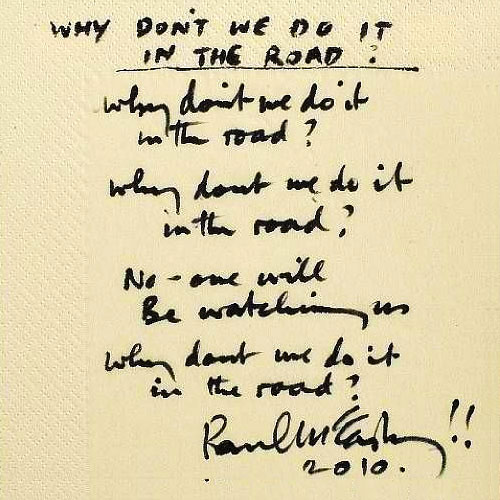
For McCartney, what we most frequently overanalyze is that which we hold most dear: our intimate and sexual relationships. Invoking the simplest possible approaches to rock ‘n’ songwriting, namely two lines of repeated lyrics and the classic 12-bar, 1-4-5 chord blues progression, the song is less than two minutes long and features no solos or musical bravado, just McCartney’s progressively rowdy vocals. The song’s simplicity is a testament to its message, which challenges, and even demands us, to answer this fundamental question: Why do we complicate things so often? Whether it’s sex, politics, religion, or , why do we complicate life with our emotional attachments? McCartney’s aggressive singing conveys his mounting frustration with this all-too-human limitation.
Interestingly, the only lyrical line beyond the title is the occasional repetition of No one will be watching us, suggesting that one key problem in human sexual relationships is our surrendering to social pressures. Given the proliferation of sexually explicit media in today’s society, and the pressures those assumptions and stereotypes placed on men and women, McCartney’s message is as prescient as ever.
McCartney’s inspiration for the song occurred while traveling in India. Noticing two monkeys copulating in a , he mused over the simplicity of their act when compared to the emotional warfare humans experience while making love or maintaining a relationship. Quick, uninhibited, and emotionally neutral, those horny monkeys inspired something profound in McCartney. Unlike animals, which copulate for reproductive purposes, our complex relationships to sexuality in profound ways shape our personalities. “Why Don’t We Do It in the ?” is Paul’s public lamentation about this paradox: Why should something that feels so good cause us so many problems? Of course, in the midst of the ‘60s sexual revolution, such a message gained instant resonance.
The song’s recording also prompted controversy among the increasingly more fractious supergroup. Since McCartney played and lead guitar, sang the vocals, and recorded the song without Lennon’s or Harrison’s knowledge, and since only Starr contributed anything else (drums and handclaps), Lennon, in particular, was angry. According to McCartney, Lennon and Harrison were busy recording two other “White Album” songs, Glass Onion and Piggies. The song took five takes; take four, a slightly tamer version of the song, is available on The Beatles Anthology 3.
—Chris Justice
8. I Will
Primary Songwriter: McCartney
Side two of The Beatles has always been my favorite. My love for it has grown enormously since age three when I was first amused by the hog grunts in “Piggies”. The variety of styles on side two has kept me listening, as does the meaning I’ve collected about each song over the years. The stupefying number of directions those nine tracks take are like passports for nine completely different mini-excursions. No two songs are at all alike. It’s a thrilling ride. Despite the kaleidoscopic nature of the material, there is continuity to how it’s sequenced.
Side two of The Beatles has always been my favorite. My love for it has grown enormously since age three when I was first amused by the hog grunts in “Piggies”. The variety of styles on side two has kept me listening, as does the meaning I’ve collected about each song over the years. The stupefying number of directions those nine tracks take are like passports for nine completely different mini-excursions. No two songs are at all alike. It’s a thrilling ride. Despite the kaleidoscopic nature of the material, there is continuity to how it’s sequenced.
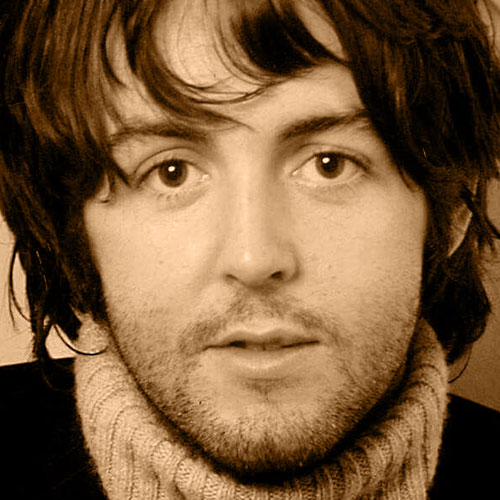
One song picking up right where the last leaves off. Even after years of listening to side two, there are aural reference points that stir excitement about the sequence of the songs. Hearing the sound of birdsong on Blackbird signals that the merry harpsichord melody that starts off Piggies is only seconds away. Try to isolate any of these songs and see how difficult it is not to anticipate the song that follows it.
The dynamic between the of songs and the aural space between them is what makes I Will such a startlingly beautiful moment after the cymbal crash that closes the raunchy blues bump ‘n’ grind of Why Don’t We Do It in the ?. In a way, the contrast between the unbridled lust and romantic love between these two neighboring cuts make interesting bedfellows. McCartney’s carnal cry gives way to a cool croon. His incessant demand to “do it” becomes an ode to lifelong devotion.
Or does it? I Will boasts one of the sweetest melodies McCartney has ever sung but it’s easy to take the lyrics for granted. I’ve always felt that, for what is ostensibly a love song, the words were a bit ambiguous in their sentiment. The third verse, the one that begins Love you forever and forever, gives the song its de facto wedding vow connotation, but the first two verses and the closing fourth suggest that McCartney’s woman is more a romantic vision than an actual person or someone he’s merely glanced at rather than spoken to. For if I ever saw you, I didn’t catch your name, he sings in the second verse. It’s his hope that imbues the song with romance and just a tad melancholy. He will wait a lonely lifetime until at last, he finds this elusive love. Doesn’t necessarily mean happily ever after, does it?
Still, I argue that it’s much more fun to be swept away by the charm of the song rather than get buried under by any despondency that might be interpreted. I Will is certainly the coziest sounding song on The Beatles. The unpretentious knock-and-shake percussive sounds, the chunky rise, and dip of the line, the crystalline guitar strumming, and, of course, McCartney’s creamy vocal performance create 1:46 of musical ambrosia. It also sets-up the quiet hush that envelops Lennon’s Julia, which closes side two.
On an album that is, arguably, the most revolutionary in the Beatles’ catalog, I Will is a moment of tranquility. Forty years later, it offers an escape to a romantic vista where the sun never sets on the hope that love is everlasting.
—Christian John Wikane
9. Julia
Primary Songwriter: Lennon
Clocking in at just under three minutes, Julia is the last song on the first disc (or side two of the LP) of The Beatles. It is the only song recorded solely by Lennon on any Beatles record (and the final song to be recorded for The Beatles). Lennon sang and played acoustic guitar, and though attributed to Lennon-McCartney, the song is a solo Lennon composition. One of the last songs recorded on the album, Julia was written during the Beatles’ trip to India in 1968. In fact, while on the same trip, Donovan and Lennon spent a great deal of time playing the acoustic guitar together.
Clocking in at just under three minutes, Julia is the last song on the first disc (or side two of the LP) of The Beatles. It is the only song recorded solely by Lennon on any Beatles record (and the final song to be recorded for The Beatles). Lennon sang and played acoustic guitar, and though attributed to Lennon-McCartney, the song is a solo Lennon composition. One of the last songs recorded on the album, Julia was written during the Beatles’ trip to India in 1968. In fact, while on the same trip, Donovan and Lennon spent a great deal of time playing the acoustic guitar together.
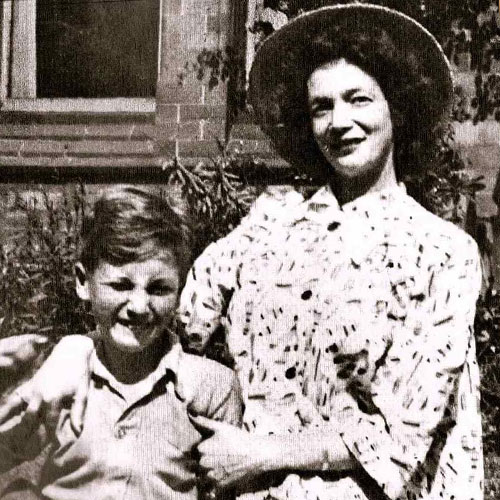
It was Donovan who taught Lennon the finger-picking style he uses in the song. An ode to Lennon’s mother, Julia is a song of longing and sadness. Lennon was raised by his Aunt Mimi, having only limited contact with his mother growing up. However, in his teenage years, they reconnected and began to spend more time together. Her sudden death (she was hit by a ) when he was 17 was a shock, and the loss of his mother would go on to serve as inspiration for songs throughout his life. He has said of the moment when he learned of his mother’s death: It was the worst thing that ever happened to me.
While ostensibly about his mother, Julia also references Ono in the line child calls me, as Yoko means child in Japanese. The song also contains a reference to Khalil Gibran’s The Prophet in the opening line, Half of what I say is meaningless/But I say it just to reach you/Julia. The Gibran line is, Half of what I say is meaningless/But I say it so that the other half may reach you. Lennon’s altering of the line makes it more pleading and in keeping with the rest of the song.
Lennon’s gentle repetition of Julia throughout the song evokes a dreamlike, almost ethereal feeling in the way that it often trails off from one lyric into the next, over-lapping words. The technique of using double-tracked vocals and fading one as another line begins lends an ephemeral air to the song, further emphasized in imagery that speaks to the temporary, such as windy , floating sky, and sleeping sand. Perhaps no line echoes this sentiment better than When I cannot sing my heart/I can only speak my mind/Julia, as it speaks to the limits of communicating his thoughts.
His hushed vocal delivery coupled with the tenderness in which he sings the words makes Julia one of Lennon’s most intimate songs. Lennon repeats the line So I sing a song of love/Julia five different times emphasizing the simple intent of the song. Regardless of the beautiful imagery and oblique references, at its heart, Julia is Lennon’s love song to his mother and it stands as one of the great songs on The Beatles, as well as one of Lennon’s most heart braking and heartfelt performances.
—Jessica Suarez




